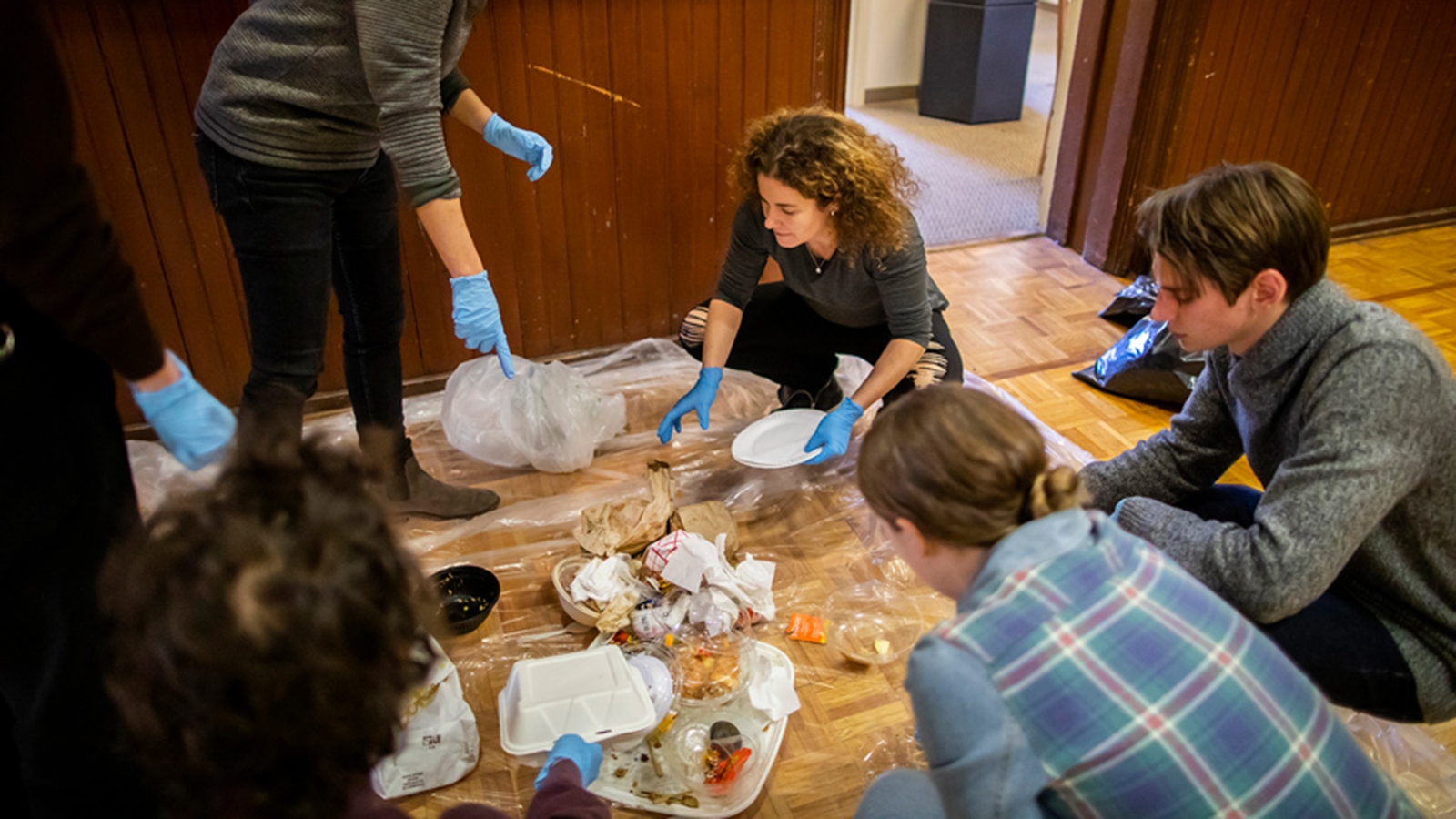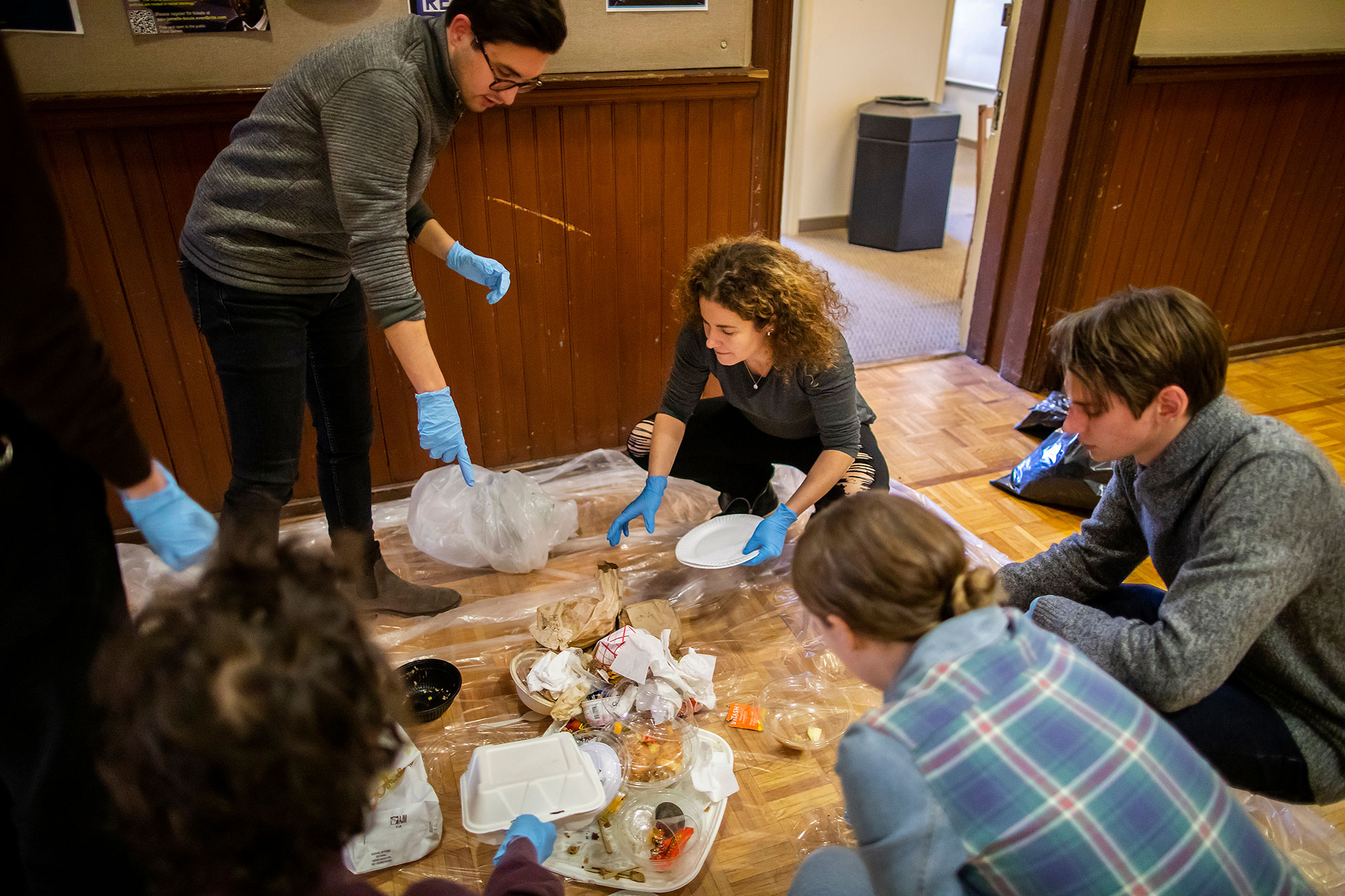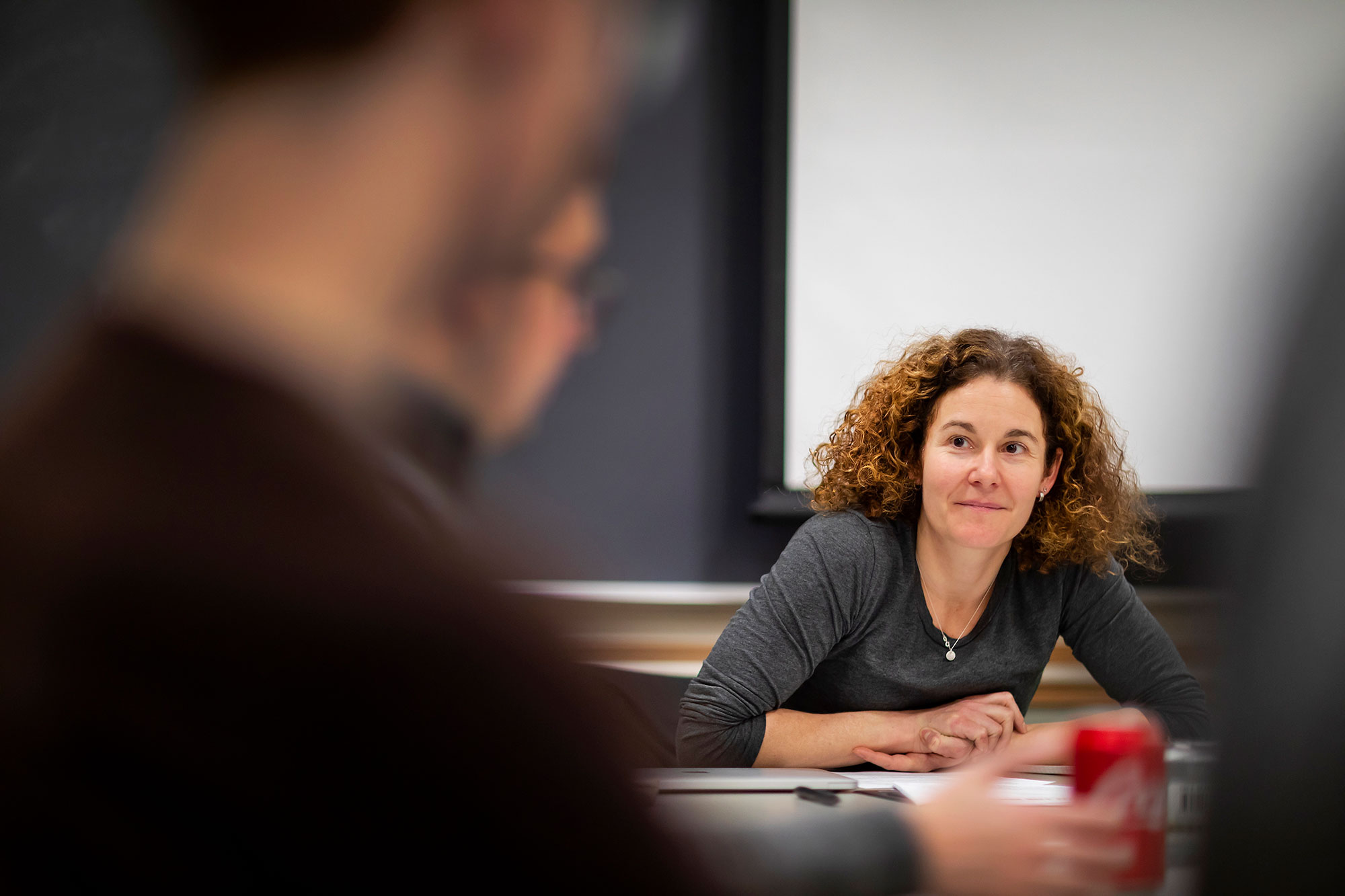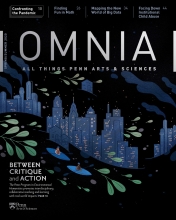Anne Berg’s course, Wastes of War: A Century of Destruction, was unconventional from the start. The assistant professor of history began the semester by bringing in a bag of her own household trash for the students to sort, something she calls a “desensitization exercise”— a way for them to look at trash with the eyes of an archeologist.
The course asked students to consider the connections between waste and war, two concepts not usually paired. But Berg says that together, they fundamentally restructure the physical and social world. She explains, “Just one example is chemical weapons that were turned into pesticides in peacetime, shaping not just the language about enemies but also the cultural imagination about human control over wastes, pests, and weeds. “
“Trash is usually out of sight and out of mind, but for this class we needed to bring it back to mind,” Berg continues. “And the kind of ‘trash’ that war and war-making produces is of a very particular kind. Bones, mines, radioactive soil, and the rifts in the social fabric remain even after the dust settles and the rubble is cleared.”
Berg planned for the class to culminate in a trip to New York City to visit the Fresh Kills Landfill—where debris from the World Trade Center was taken in the days and months after the terrorist attack—and the 9/11 Memorial and Museum. The landfill was the main resource for the objects now on display in the museum, which prompts questions of when and how a thing is designated as trash or an artifact.
But the COVID-19 pandemic and the transition to remote learning altered the course of the semester, and Berg began holding the seminar on Zoom and making plans for an online tour of the landfill.
“When I first learned that all of us would teach exclusively online, I dreaded the potential technological disruptions,” she says. “But I was eager to see my students, and seeing their faces and hearing their voices has been comforting.”
In addition to technological challenges, Berg recognizes that being separated from campus resources may affect the work her students can do. “I don’t know what their lives are like at home,” she explains. “They have other things to worry about. It’s really tricky to imagine that we could all just continue on as if nothing had happened.”
Still, she views the class as a welcome respite from current events, saying, “When we resumed online, it was obvious that every single one of us was determined to leave our own personal stresses behind and spend 90 minutes diving into a different world.”
Going remote meant Berg also had to make changes to the final project, an in-depth investigation into the history of Earth Day at Penn and its connections to broader social movements.
Berg worked with J.M. Duffin, Acting University Archivist, who digitized Penn records so students could access them remotely. Members of the class used online resources to find the news stories that helped them understand the historical moment in which Earth Day began 50 years ago.
“It’s a bummer that we couldn’t go into the archives and sit there and puzzle over the documents together,” says Berg. “But the students did an amazing job and we worked very collaboratively. Some of them are even remaining on as research fellows so we can keep the project going.”
The students found Earth Day’s connection to other activism including antiwar protests, but also discovered that its celebration has often elided environmental problems experienced by predominately poor communities. “Earth Day has such happy connotations,” Berg says,” “but our research uncovered some of its less flattering aspects.”
Berg and her students built an online platform so students could showcase their findings. They took full advantage of the newly digital exhibit, including visual and audio artifacts alongside their writing.
Check out the students’ research: web.sas.upenn.edu/earthdayproject






